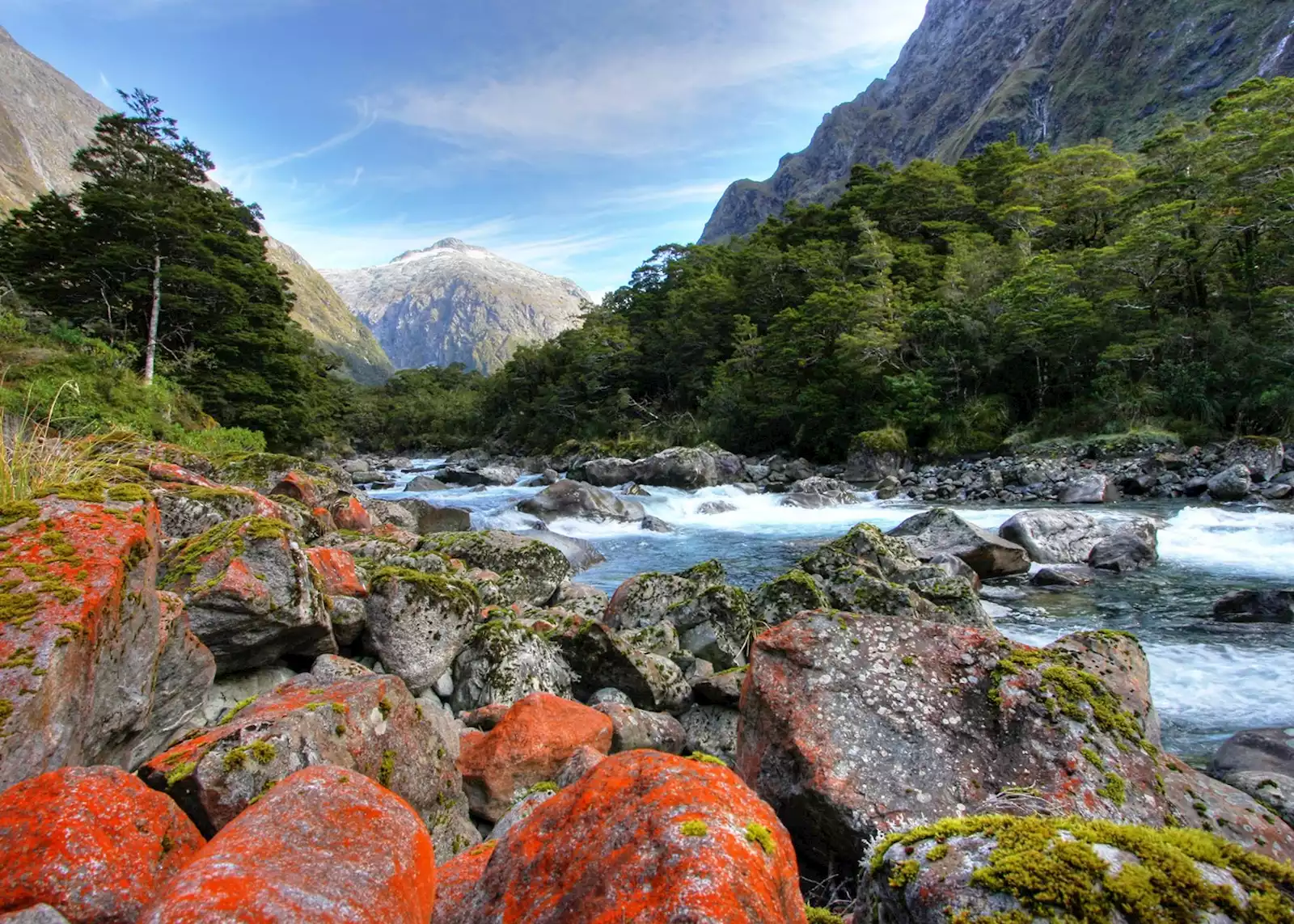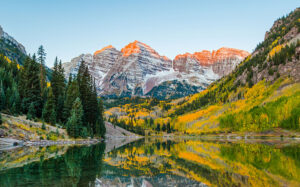When it comes to New Zealand wildlife, you might be thinking sheep, sheep, and more sheep—and you wouldn’t be wrong. Until recently, New Zealand’s sheep-to-human ratio sat at about 22 sheep for every person in the country. That’s enough wool for a lot of sweaters! But that’s far from all this island nation has to offer visitors and nature enthusiasts. A diverse collection of unique animals make this coastal country their home, and the story behind them is fascinating. For millions of years before humans arrived, there wasn’t a single mammal to be found anywhere in New Zealand. Instead, a plethora of wild bird species, reptiles, and marine life thrived in the region, evolving in isolation to create some of the world’s most distinctive creatures. This includes a lizard whose DNA goes back 200 million years, unchanged since the days it walked the land with dinosaurs. What you won’t find, however, are snakes—not a single snake slithers around New Zealand, which is great news for all the ophidiophobics out there.
We’ve rounded up the most unique creatures you’ll encounter, ensuring your next trip involves doing more than just counting sheep.
Albatross: The Legendary Seabird
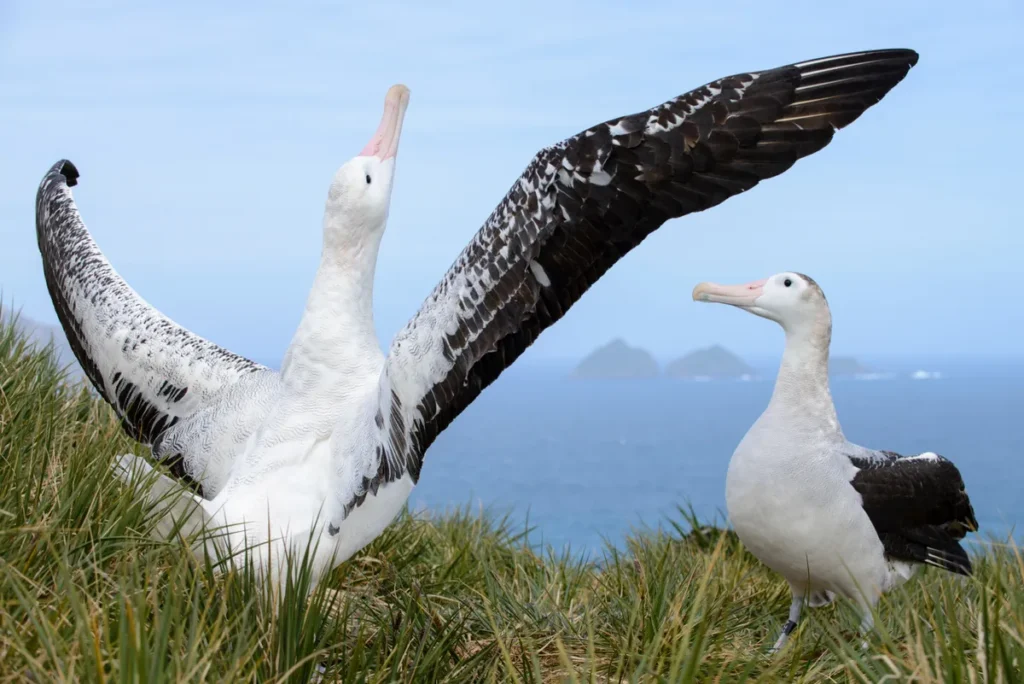
A storied history riddles this legendary bird’s past. Sailors once believed that seeing an albatross in the sky meant good luck. The giant bird was said to carry the souls of dead sailors to protect ships from danger. However, if one were to kill an albatross, certain doom would befall all aboard—a superstition famously captured in Samuel Taylor Coleridge’s poem “The Rime of the Ancient Mariner.”
These days the albatross isn’t as steeped in superstition, but the real facts behind the bird are just as fascinating. They rank among the largest seabirds on the planet. At their largest, their wings can span more than 12 feet across—almost six times the average seagull’s wingspan.
The albatross is like the drone of the bird world. They use nearly autonomous, micro-wing movements to stay aloft using minimal effort. For the albatross, this makes flying literally a breeze—they can glide for hours without flapping their wings.
They can even sleep while flying and have been known to stay out at sea for years, only returning to land to mate and feed their young. Scientists recently tracked an albatross circling the entire globe—more than 10,000 miles—in just 46 days.
Wildlife Tip: Before you see an albatross in person, keep tabs on the newest addition to the Taiaroa Head albatross colony via live web-stream. Albatross chicks hatch in late January and remain until they’re old enough to fly away in September. The chick’s parents return from sea daily to feed their young—an amazing look at New Zealand wildlife up close.
Tuatara: New Zealand’s Living Dinosaur
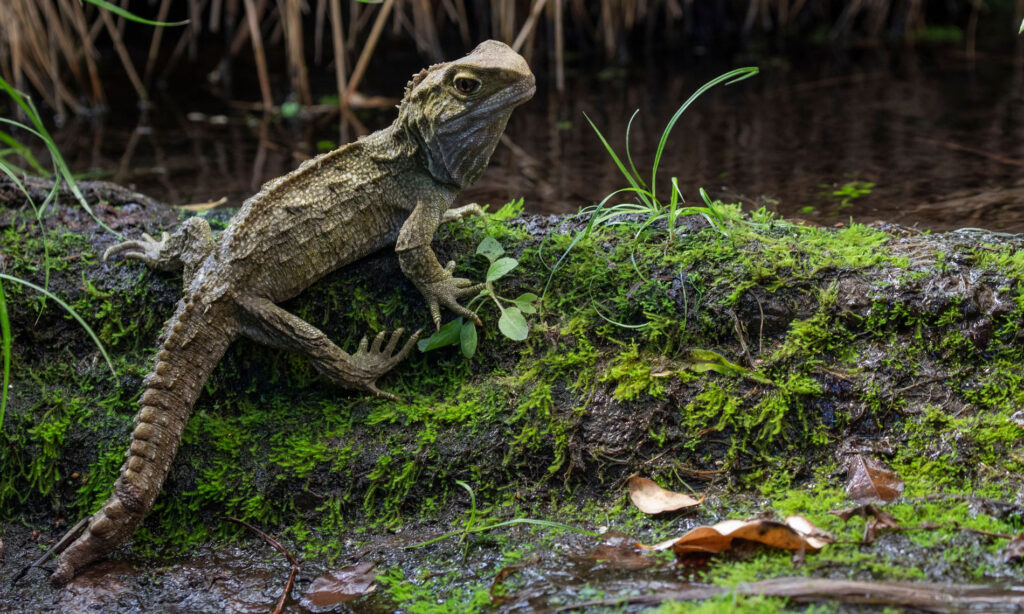
What has three eyes, zero ears, and has called New Zealand home for more than 200 million years?
The tuatara, New Zealand’s “living dinosaur”, still carries the same DNA since it walked alongside actual dinosaurs. A third eye on top of its head (physical, not metaphorical) is thought to help produce vitamin D and regulate night and day cycles, but even scientists still don’t know its complete function.
At the very least, it makes up for having no ears!
As mammals like wildcats and rodents were introduced to the mainland, tuataras became quick and easy prey and populations were decimated. These days they thrive solely on islands off the New Zealand coast—like a real-life Jurassic Park right in New Zealand.
However, being banished to an island turned out beneficial. Without natural predators, the tuatara can live to be more than 100 years old. The tuatara represents one of New Zealand’s most important conservation success stories, with ongoing efforts to protect and study these ancient reptiles.
Kea Parrot: The Clowns of the Mountain
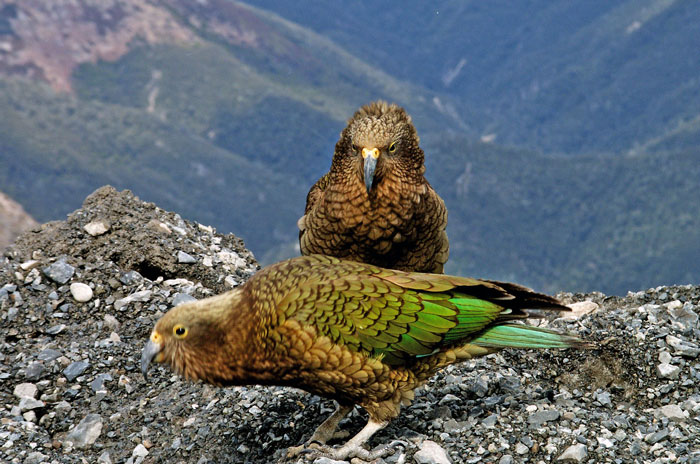
If you thought you had to travel to the tropics to see parrots, think again. This New Zealand exclusive is the world’s only alpine parrot and is found only in select parts of the South Island. Like most parrots, the Kea is an intelligent bird. Researchers estimate that the Kea is as smart as a 4-year-old child—without ever having stepped foot in preschool.
The Kea is notorious for its brash personality. They’ve developed almost non-existent boundaries around humans, a blessing and curse that makes getting an up-close picture of the Kea possible, but also enables less savory encounters.
Because of the bird’s hyper-curious nature and general trust around people, they’ve been known to peck and damage cars and rifle through bags and clothing. One Kea even made off with a tourist’s unguarded wallet in Fiordland National Park.
It’s no wonder they call these pick-pocketing parrots the “clowns of the mountain.”
You’ll want to see this beautiful bird in person, and the best place to do it is in Fiordland. Take a nature cruise of Milford Sound for beautiful landscapes and wildlife spotting. Kea parrots have been known to hang out in the parking lot of Milford Sound, so be sure to keep an eye on your wallet!
Glowworms: Nature’s Underground Light Show
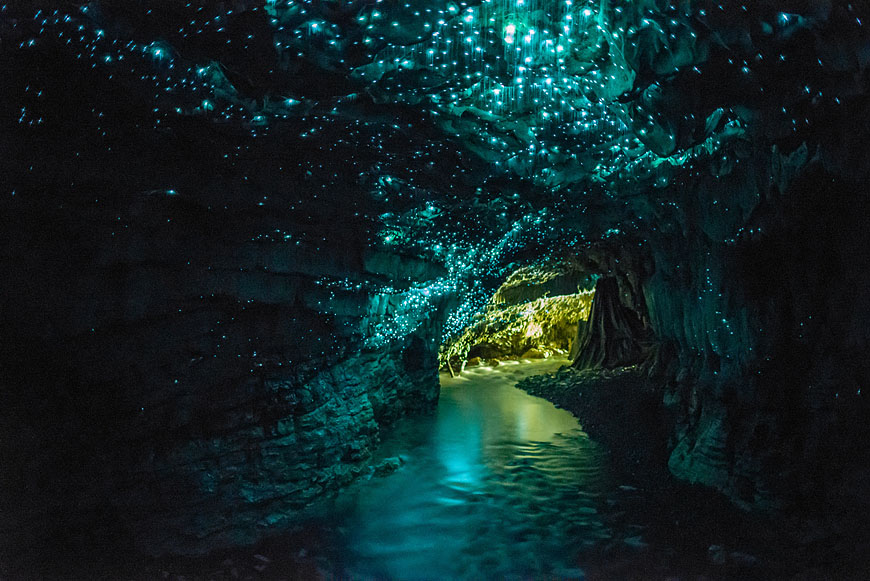
No other animal can claim to attract more than 400,000 visitors to New Zealand every year. The Waitomo Glowworm Caves are the most popular cave system in all of Australasia, which includes New Zealand, Australia, New Guinea, and other islands.
How do they do it?
Tourists flock to the Waitomo Caves to see the hypnotic, bluish glow that illuminates the subterranean site. Millions of glowworms cover the cavernous interior and light up like blue fireflies during their feeding stage. The insects create sticky silk threads that hang down from the ceiling, which glow to attract prey.
The best part about seeing the glowworms is the silent “black-water” river raft ride that you take to view them. You’ll float along the water beneath the canyon in total darkness, with only the star-like light of glowworms above creating an otherworldly atmosphere.
Travel Tip: Waitomo Glowworm Caves make a great back-to-back trip with Rotorua’s amazing geothermal features. Take a tour of both for a day you’ll never forget.
Dusky Dolphins: The Acrobats of the Sea
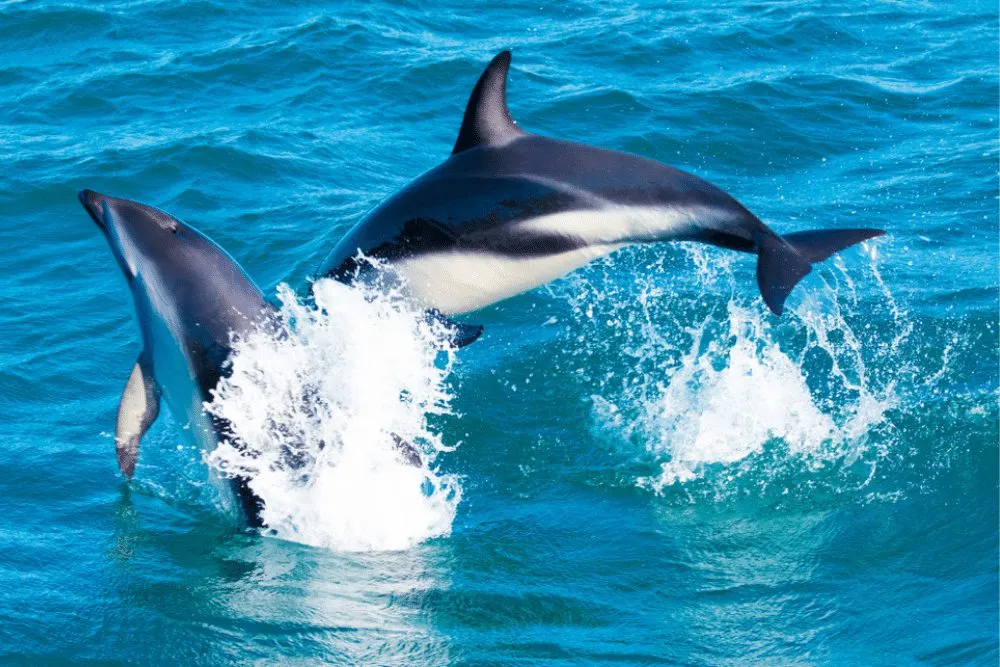
These quirky marine mammals are best known for their aerial acrobatics. While all dolphins exhibit breaching behavior to breathe from their blowholes, dusky dolphins seem to perform out-of-water stunts like aerial jumps, spins, tail-over-head dives, barrel rolls, and more—seemingly for no other reason than their own enjoyment!
Dusky dolphins are found off the South African coast, South America, and many oceanic islands, but the largest concentrations are found all over New Zealand waters, including the Kaikoura Coast. Guided tours allow you to swim with dolphins in their natural environment.
Dusky dolphins are curious around humans, and interaction with them is possible without feeding, changing their environment, or otherwise disrupting their natural habitat. This makes for an ethical wildlife encounter that respects the animals.
Tour-goers have reported dusky dolphins in pods numbering in the hundreds. The dolphins swim with and seem to mirror human behavior (diving in as humans dive in) without being coaxed into an encounter. This natural curiosity makes for unforgettable marine wildlife experiences.
Yellow-Eyed Penguin: The Rarest Penguin Species
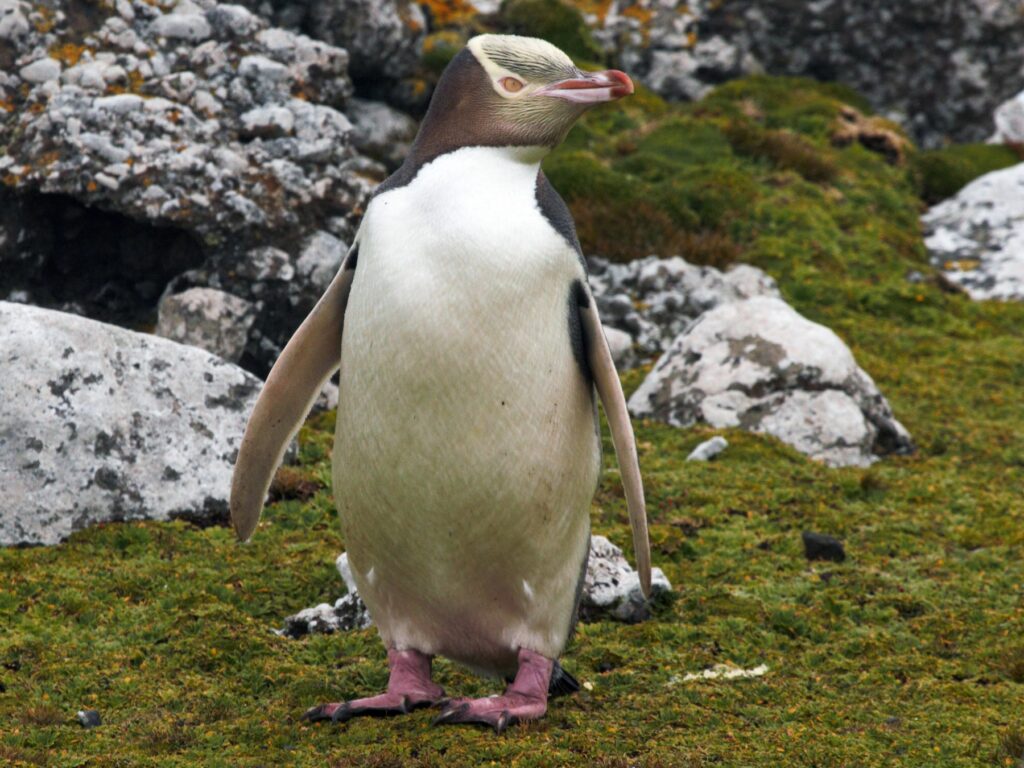
This tuxedoed New Zealand native is the rarest species of penguin in the entire world. The distinct yellow banding around their eyes sets these quirky creatures apart from their Antarctic cousins to the south.
Yellow-eyed penguins, also known by their Maori name hoiho, are increasingly endangered. They generally breed on the South Island of New Zealand, and habitats are found off the coast of Dunedin.
You can catch a glimpse of this rare land-bird with a cruise to Penguin Place wildlife refuge where conservation efforts are underway to increase the animal’s decreasing population. These conservation programs play a vital role in protecting New Zealand’s unique biodiversity.
Seeing yellow-eyed penguins in their natural habitat is a privilege, as there are estimated to be fewer than 4,000 individuals remaining in the wild. The best time to spot them is late afternoon when they return from fishing trips at sea.
Kiwi: New Zealand’s National Icon
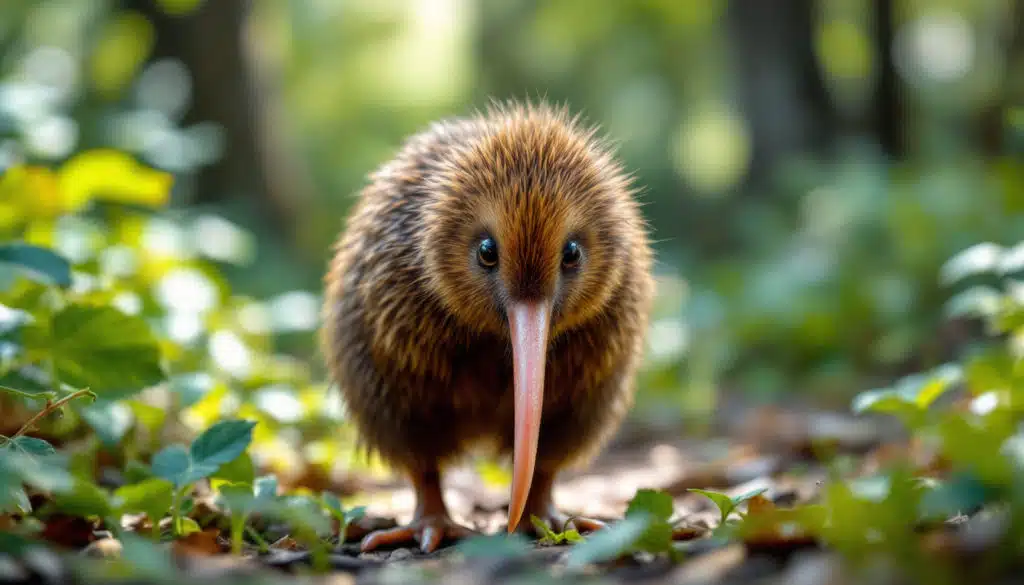
You didn’t think we’d skip New Zealand’s most iconic animal, did you? This large, flightless bird is an icon inseparable from New Zealand identity. The word Kiwi is used as a term of endearment for native New Zealanders and even adorns the country’s $1 coin.
Not bad for a bird that can’t even fly.
The Kiwi’s arrival to the island nation remains somewhat mysterious. Some say the bird descended from an ancestor capable of flight. Others theorize they arrived before New Zealand broke off from the ancient supercontinent Gondwana millions of years ago—essentially just walking right over.
The Kiwi is a cherished part of New Zealand wildlife and culture, whichever way they arrived. These nocturnal birds have several unique characteristics, including nostrils at the end of their beaks (unusual for birds) and hair-like feathers.
Unfortunately, the Kiwi is an increasingly endangered species, so they may be hard to spot in the wild. Introduced predators like stoats, cats, and possums have devastated Kiwi populations. The best way to see a Kiwi up close is through conservation projects and nature reserves, like Zealandia in Wellington or the Kiwi Birdlife Park in Queenstown.
Where to See New Zealand Wildlife
New Zealand offers numerous opportunities for wildlife viewing across both islands. Here are the best locations for encountering these unique creatures:
North Island Wildlife Spots
Zealandia in Wellington provides a predator-free sanctuary where you can see Kiwi birds, tuatara, and numerous bird species in a 500-acre protected valley. The fully fenced ecosanctuary represents what New Zealand looked like before humans arrived.
Waitomo remains the premier destination for glowworm encounters, with several cave systems offering different experiences from gentle boat rides to black water rafting adventures through underground rivers.
Rotorua offers not just geothermal features but also several bird sanctuaries where you can observe native species in protected environments.
South Island Wildlife Destinations
The Kaikoura Coast is New Zealand’s marine wildlife capital. Beyond dusky dolphins, you can encounter sperm whales, humpback whales, fur seals, and diverse seabirds in this nutrient-rich coastal environment.
Milford Sound in Fiordland National Park offers chances to see Kea parrots, dolphins, fur seals, and numerous seabirds against dramatic fjord scenery. The nature cruises here combine spectacular landscapes with excellent wildlife spotting opportunities.
Dunedin and the Otago Peninsula provide access to yellow-eyed penguin colonies, albatross breeding grounds at Taiaroa Head, and fur seal colonies. This region is essential for serious wildlife enthusiasts.
Queenstown serves as a gateway to multiple wildlife experiences and is home to the Kiwi Birdlife Park, where you can see Kiwi birds and other native species in naturalistic enclosures.
Best Time for Wildlife Viewing
The optimal time for wildlife viewing in New Zealand depends on which animals you want to see:
Summer (December-February) offers the best weather for marine wildlife encounters, with dolphins, whales, and seals most active. Albatross chicks are visible at Taiaroa Head during this period.
Autumn (March-May) provides excellent bird watching opportunities as many species are still active but tourist crowds diminish.
Winter (June-August) is prime time for whale watching at Kaikoura, particularly for humpback whales migrating through New Zealand waters.
Spring (September-November) sees increased bird activity as breeding season begins. Glowworms can be seen year-round, though caves may be less crowded during shoulder seasons.
Responsible Wildlife Tourism
When experiencing New Zealand wildlife, it’s crucial to practice responsible tourism:
Always maintain appropriate distances from wild animals. Guided tours ensure you observe wildlife without causing stress or disrupting natural behaviors.
Never feed wild animals, including the mischievous Kea parrots. Human food can harm wildlife and create dangerous dependencies.
Support conservation efforts by choosing tour operators who contribute to protection programs and follow Department of Conservation guidelines.
Stay on designated paths in wildlife areas to avoid damaging habitats or disturbing nesting sites.
Conservation Challenges and Success Stories
New Zealand faces ongoing challenges in protecting its unique wildlife. Introduced predators have devastated populations of ground-nesting birds like the Kiwi and yellow-eyed penguins.
However, conservation initiatives show promising results. Predator-free islands and mainland sanctuaries like Zealandia demonstrate that native species can recover when given protection. The tuatara recovery represents one significant success story.
Community-based conservation programs engage local residents in protecting endangered species. These efforts combine traditional Maori conservation knowledge with modern science to create effective protection strategies.
Supporting wildlife tourism and conservation organizations helps fund these ongoing efforts to preserve New Zealand’s extraordinary biodiversity for future generations.
Explore more wildlife destinations, conservation stories, and nature travel guides at The Inspiring Insight—where we celebrate the incredible creatures that make our planet extraordinary and the dedicated efforts to protect them for generations to come.

